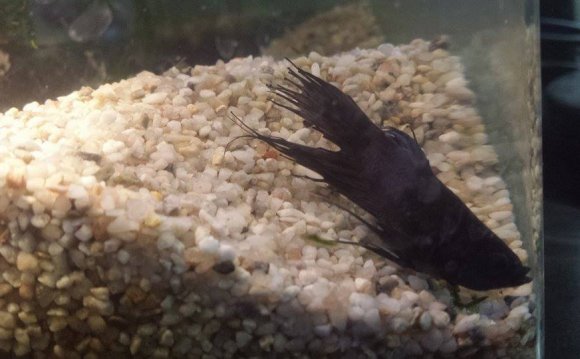
Bacterial Infections: Inactivity, loss of color, frayed fins, bloated body, cloudy eyes, open sores, abscesses, red streaks throughout body, reddening or inflammation of the skin, fins or internal organs, bulging eyes, difficulty breathing.
Fungal Infections (often secondary to another type of illness):Erratic swimming, darting, scratching, visible cotton-like tufts on skin, eyes, or mouth.
Parasitic Infections: Inactivity, loss of appetite, excess mucus or film on body, visible spots or worms, rapid breathing, scratching.
Understand that while salt is frequently used as a treatment/preventative for sick fish, it is no guarantee. It can even be dangerous to some fish (for example, cory catfish).
There is nothing more important than maintaining a proper environment (temperature, water quality, aeration).
Basically, salt will strip or re-stimulate (depending upon the concentration) the slime coat produced by the fish, increasing antibodies and making bacteria, fungus, and parasites more vulnerable to medications such as antibiotics or fungicides.
The following salts can be used in a salt treatment for your fish: Aquarium, solar (without anti-caking additives), meat curing, sea, kosher, rock, pickling, and ice cream salts, or regular non-iodized table salt.
The additives mentioned above may include a type known as sodium ferrocyanide or yellow prussiate of soda. This is deadly to fish. The "cyanide" part should clue you in to that.
For a constant preventative treatment, use a low concentration of about .3%. This is equal to about 2.5 teaspoons per U.S. gallon of water. If you have live plants in your aquarium, you may want to consider about half that amount.
For a concentrated "dip" to be used in treatment of external parasites, the concentration should be 1%, or 7.5 teaspoons per U.S. gallon. You must be very careful when using these dips. All fish will react differently to salt treatments, and especially smaller fish must be monitored very closely. Generally this will be done in a hospital/quarantine tank, as water changes are the only way to remove salt from your main tank. The hospital/quarantine tank should be at least one gallon, with no rocks and only two or three plastic plants for security. The temperature should be kept between 75-80 degrees with good aeration. Dissolve your salt completely before adding your fish. Once you have put your fish into the water, watch it closely for signs of distress, such as rolling over. This may be as quickly as a few seconds with smaller or baby fish. Remove the fish at the first sign! Do not leave your fish in this solution longer than 30 minutes. Then place it in a container of aged water, preferably not taken from the main (still infected) tank. Give the tank a thorough cleaning while your fish recuperates.









